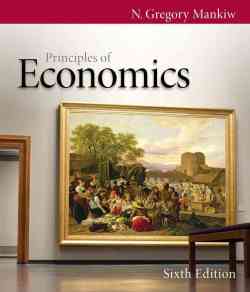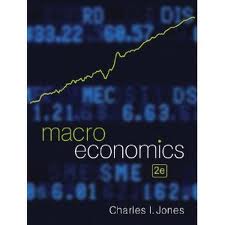Blogger Ref Link http://www.p2pfoundation.net/Transfinancial_Economics

As is well-known, Keynes used to criticize the more traditional economics for making the fallacy of composition, which basically consists of the false belief that the whole is nothing but the sum of its parts. Keynes argued that in the society and in the economy this was not the case, and that a fortiori an adequate analysis of society and economy couldn’t proceed by just adding up the acts and decisions of individuals. The whole is more than a sum of parts.
This fact shows up already when orthodox – neoclassical – economics tries to argue for the existence of The Law of Demand – when the price of a commodity falls, the demand for it will increase – on the aggregate. Although it may be said that one succeeds in establishing The Law for single individuals it soon turned out – in the Sonnenschein-Mantel-Debreu theorem firmly established already in 1976 – that it wasn’t possible to extend The Law of Demand to apply on the market level, unless one made ridiculously unrealistic assumptions such as individuals all having homothetic preferences – which actually implies that all individuals have identical preferences.
This could only be conceivable if there was in essence only one actor – the (in)famous representative actor. So, yes, it was possible to generalize The Law of Demand – as long as we assumed that on the aggregate level there was only one commodity and one actor. What generalization! Does this sound reasonable? Of course not. This is pure nonsense!
How has neoclassical economics reacted to this devastating findig? Basically by looking the other way, ignoring it and hoping that no one sees that the emperor is naked.
Having gone through a handful of the most frequently used textbooks of economics at the undergraduate level today, I can only conclude that the models that are presented in these modern neoclassical textbooks try to describe and analyze complex and heterogeneous real economies with a single rational-expectations-robot-imitation-representative-agent.

That is, with something that has absolutely nothing to do with reality. And — worse still — something that is not even amenable to the kind of general equilibrium analysis that they are thought to give a foundation for, since Hugo Sonnenschein (1972) , Rolf Mantel (1976) and Gerard Debreu (1974) unequivocally showed that there did not exist any condition by which assumptions on individuals would guarantee neither stability nor uniqueness of the equlibrium solution.
So what modern economics textbooks present to students are really models built on the assumption that an entire economy can be modeled as a representative actor and that this is a valid procedure. But it isn’t — as the Sonnenschein-Mantel-Debreu theorem irrevocably has shown.
Of course one could say that it is too difficult on undergraduate levels to show why the procedure is right and to defer it to masters and doctoral courses. It could justifiably be reasoned that way – if what you teach your students is true, if The Law of Demand is generalizable to the market level and the representative actor is a valid modeling abstraction! But in this case it’s demonstrably known to be false, and therefore this is nothing but a case of scandalous intellectual dishonesty. It’s like telling your students that 2 + 2 = 5 and hope that they will never run into Peano’s axioms of arithmetics.
Or — just to take another example — let’s see how the important macroeconomic question of wage rigidity is treated.

Among a couple of really good intermediate – neoclassical – macroeconomics textbooks, Chad Jones textbook Macroeconomics (2nd ed, W W Norton, 2011) stands out as perhaps one of the better alternatives. Unfortunately it also contains some utter nonsense!
In chapter 7 – on “The Labor Market, Wages, and Unemployment” – Jones writes (p. 179):
The point of this experiment is to show that wage rigidities can lead to large movements in employment. Indeed, they are the reason John Maynard Keynes gave, in The General Theory of Employment, Interest, and Money (1936), for the high unemployment of the Great Depression.But this is pure nonsense. For although Keynes in General Theory devoted substantial attention to the subject of wage rigidities, he certainly did not hold the view that wage rigidities were “the reason … for the high unemployment of the Great Depression.”
Since unions/workers, contrary to classical assumptions, make wage-bargains in nominal terms, they will – according to Keynes – accept lower real wages caused by higher prices, but resist lower real wages caused by lower nominal wages. However, Keynes held it incorrect to attribute “cyclical” unemployment to this diversified agent behaviour. During the depression money wages fell significantly and – as Keynes noted – unemployment still grew. Thus, even when nominal wages are lowered, they do not generally lower unemployment.
In any specific labour market, lower wages could, of course, raise the demand for labour. But a general reduction in money wages would leave real wages more or less unchanged. The reasoning of the classical economists was, according to Keynes, a flagrant example of the “fallacy of composition.” Assuming that since unions/workers in a specific labour market could negotiate real wage reductions via lowering nominal wages, unions/workers in general could do the same, the classics confused micro with macro.
Lowering nominal wages could not – according to Keynes – clear the labour market. Lowering wages – and possibly prices – could, perhaps, lower interest rates and increase investment. But to Keynes it would be much easier to achieve that effect by increasing the money supply. In any case, wage reductions was not seen by Keynes as a general substitute for an expansionary monetary or fiscal policy.
Even if potentially positive impacts of lowering wages exist, there are also more heavily weighing negative impacts – management-union relations deteriorating, expectations of on-going lowering of wages causing delay of investments, debt deflation et cetera.
So, what Keynes actually did argue in General Theory, was that the classical proposition that lowering wages would lower unemployment and ultimately take economies out of depressions, was ill-founded and basically wrong.
Where Keynes found it unproblematic to link flexible wages and prices to involuntary unemployment, modern “Keynesian” macroeconomists has turned his theory into different kinds of fix-price models. But to Keynes, flexible wages would only make things worse by leading to erratic price-fluctuations. The basic explanation for unemployment is insufficient aggregate demand, and that is mostly determined outside the labor market.
So — for almost forty years neoclassical economics has lived with a theorem that shows the impossibility of extending the microanalysis of consumer behaviour to the macro level (unless making patently and admittedly unrealistic and absurd assumptions). Still after all these years neoclassical economists pretend in their textbooks that this theorem does not exist. Most textbooks don’t even mention the existence of the Sonnenschein-Mantel-Debreu theorem. And when it comes to Keynes and wage rigidities, Jones’s macroeconomics textbook is not the only one containing the kind of utter nonsense we’ve mentioned. But here the solution to the problem is more easy. Keynes books are still in print. Read them.
The real scientific challenge — that also has to be reflected in textbooks — is to accept uncertainty and still try to explain why economic transactions take place — instead of simply conjuring the problem away by assuming rational expectations, representative actors, universal market clearing and treating uncertainty as if it was possible to reduce it to stochastic risk. That is scientific fraud. And it has been going on for too long now.

The above article is from the blog of Lars P Syll
No comments:
Post a Comment